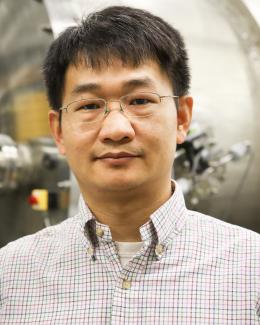Abstract
Natural gas furnaces are the most common space heating equipment in the U.S. residential and commercial building markets. However, current residential natural gas condensing furnaces generate substantial acidic condensate as well as significant emissions of sulfur oxides (SOx), nitrogen oxides (NOx), carbon monoxide (CO), hydrocarbons (HC), and methane (CH4) contributing to environmental degradation of air, water, and soil. This report describes a novel solution to reduce the environmental impact of natural gas condensing furnaces based on the technology of a monolithic acidic gas reduction (AGR) catalyst for SOx trapping, NOx redox to nitrogen, and oxidation of formic acid, CO, HC, and CH4. The AGR technology offers the following benefits: (1) a neutral furnace condensate with a pH of ~7, allowing its safe release into the sewer system thus eliminating a second drainage system; (2) trapping and removing nearly all SOx emissions; (3) NOx emissions nearly at nearly 1-2 ng/J, more than 95% lower than new emissions standards in California; (4) the use of a low-cost heat exchanger as a condensing heat exchanger (HX) since the condensate is not acidic, avoiding the need for expensive stainless steel alloys; and (5) unburnt fuel energy recovery to boost efficiency.
The AGR component and AGR-enabled furnace performance were broadly tested to determine their effects on long-term reliability and durability, as well as SOx storage and regeneration activity. The AGR regeneration does not impair the performance in achieving neutral condensate and ultra-low NOx emissions, and the AGR catalyst subjected to regeneration activities continued to function well and achieved slightly better annual fuel utilization efficiency (AFUE). The 400-hour reliability and durability test of the retrofitted condensing furnace with the AGR component shows that the furnace unit still achieves a neutral furnace condensate with a pH of ~7 and enables 0~3 ng/J of NOx emissions. However, the 400-hour operation slightly degraded the AFUE because of soot particle accumulation caused by frequent incomplete combustion owing to inappropriate condensate drainage during testing. Thus, proper condensate drainage is critical for AGR-enabled furnaces. Furthermore, neutron computed tomography was employed to survey the aged AGR component and demonstrate high-resolution 2D and 3D representations for the nondestructive diagnosis of the AGR component. The tomography showed that the AGR component did not deform or suffer broken AGR channels.
A new AGR catalyst with low precious metal loading was preliminarily explored to identify a pathway of optimizing AGR material loading and maximizing acidic gas reduction at low cost. The new AGR component can reduce precious metal loading by 38% and still achieve neutral condensate and ultralow NOx emissions. The furnace with the AGR component of low Pt/Rh loading enables a maximum AFUE of 97%, which is meaningfully higher than the original furnace. Long-duration testing for the furnace enabled with the low precious metal loading AGR component will be vital in future research.
Although the current work demonstrates a proof of concept for the AGR-enabled furnace, the AGR assembly needs to be optimized and integrated into the design of new OEM furnace products. Furthermore, the AGR technology can be applied not only for residential gas furnaces, but also for commercial rooftop units, gas heat pumps, gas-fired water heaters, combustion boilers, and other systems.







